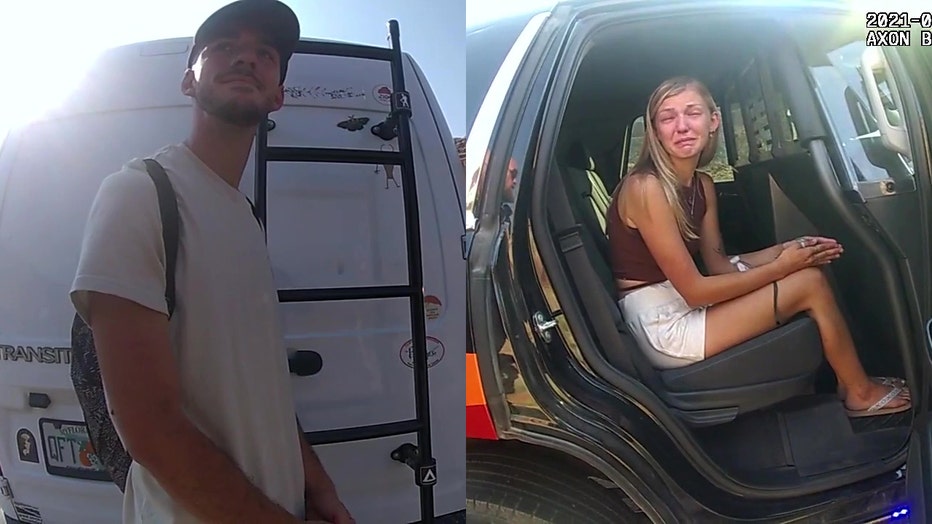Recent Blogs
Blog Details

The first indicator that Gabby’s behaviors align with victim behaviors is that she takes immediate responsibility by apologizing for what she did and taking responsibility for Brian’s behaviors, too, minimizing anything he could have done that led to the traffic stop and to their argument. She apologized for “distracting him” and for “being mean,” something an aggressor does not do. She discusses having OCD and said, “guess my vibe is in a bad mood,” explaining and appearing to verbalize criticism it seems she has heard from him regarding her OCD anxiety, indicating Brian’s potential lack of empathy for her mental health struggles. She discussed Brian not allowing her in the car because she “needed to calm down,” which is indicative of control and threatened abandonment, as well as criticism regarding her expression of emotion.
Brian’s behavior aligns with the aggressor, as abusers do not take personal responsibility for what they do and instead point the blame and sole responsibility for the event and for their own behavior onto the other person. Brian speaks about everything being okay if Gabby didn’t behave the way she did. He’s avoidant in his description of the situation, blaming her for having a cell phone in her hand with no clear indication as to why her having a cell phone would threaten him. Abusers don’t want their victims to have access to outside help, which a cell phone represents. Brian discusses having a good reason for pushing Gabby and minimized his own behavior of taking the car keys and keeping her from access to safety and a possible way to escape. Taking keys is a common way that abusers influence a sense of helplessness and powerlessness in victims.
Brian pathologizes Gabby’s behaviors, influencing the officers to focus on her mental health issues, calling her “crazy” and then claiming his statement was a joke, another common tactic of emotional abuse. He paints himself to be the victim through the entirety of the situation, changing his tone of voice to one of passivity and a bit of a whiney quality when he discusses telling her to “back up,” as if he is small and helpless around her when he is actually much larger and holding much more inherent power and control within the situation. He discusses Gabby getting upset with him due to things he can’t control (such as having dirty feet) while not extending her the same understanding, and he apologizes for how her behaviors inconvenience the officers, placing the focus on her and away from him. Brian’s concerns for himself over his concerns for her are indicative of his statement, “I hope she doesn’t have too many complaints about me,” which is commonly present in abusers as they are trying to assess what the victims are saying about them and if their behaviors of abuse are being revealed.
Brian’s laughter and quick reduction in anxiety is telling when the officers tell him that Gabby can be arrested given the officers’ assessment and that he has done “nothing wrong.” Brian’s enjoyment and reduction of anxiety continue after he asks the officer if he can be taken to jail, with increased friendliness with the officers through joking after receiving confirmation that he won’t be, and with an immediate dropping of the “hyper” behavior the original officer noted in him. Abusers look for control within situations, and he demonstrates his search for control and focuses on protecting himself and his own needs over others by repeatedly seeking to find out if he is in trouble. Victims don’t tend to relax and return to emotional baseline (calm mood) quickly or with the reassurance they are not in trouble as they have been emotionally traumatized, and Gabby demonstrates this typical behavioral pattern. A victim’s main focus doesn’t tend to be on whether they can be arrested or not, unless the aggressor has threatened them with having them arrested, and even then, they usually respond with fear and distress with the idea of potential arrest, not just anxiety.
Brian not wanting her to be arrested does not necessarily mean he cares about Gabby or has empathy for her, which is a common misinterpretation. Abusers may utilize the police in domestic violence situations to instill fear and compliance in the victim. After the police focus on the “emotional” behavior of the victim, the aggressor can utilize the fear of being arrested in the future to stop the victim from contacting help. It makes the victim much less likely to reach out for help or to speak about the incident. Brian doesn’t want her to have a phone and he also says, “I’m sorry this had to be so public.” Abusers want their behaviors to remain in private. That’s how they get to continue to abuse.
While the officers were polite, they demonstrated bias, internalized misogyny, and stigmatization of mental health issues. They engage in alignment and relationship-building with Brian, joining him in the “difficulties” of being in a relationship. One officer discussed his own issues within his relationship with his ex-wife as if they are the same as what is happening between Gabby and Brian, stating that his similar difficulties are “why she’s my ex-wife,” and discussing how Gabby and Brian are probably similar with him in feeding off of and spiraling off of one another’s anxiety. This feeds into the myth of equality within a domestic violence relationship and a domestic violence event. The officers focus on Gabby’s strong emotional mental health struggles while dismissing focus on Brian’s report of struggling with the same mental health condition that Gabby is struggling with, even though Brian reports neither of them taking medication. The officers question Brian in an open manner while approaching Gabby with statements of “Be very careful about how you answer this question as it will determine if you are charged. Think very hard.” They completely ignore the differing stories about the steering wheel and about Brian grabbing Gabby’s face. Grabbing someone’s face is not a protective self-defense move, and the police focused instead on Brian pushing Gabby as if he is protecting himself from her. They spent a lot of time finding ways to help Brian problem-solve and making sure he isn’t inconvenienced by the location of the hotel. Gabby was kept isolated for much of the stop by police while police literally fist bump Brian as he was leaving. Isolation is a key control component with emotional abuse, and the behavior of the police here aligns with furthering isolation. The officer encourages Gabby’s compliance and lowering of her personal power by asking if she wants them to tell him she loves him and will see him the next day, encouraging caretaking of Brian’s needs over tending to her own. Gabby ends up trying to make sure Brian has a phone charger, which aligns with the caretaking behaviors of an abuse victim. It also goes against Brian’s claims that he doesn’t have a cell phone and that was why he didn’t want her leaving with her phone, yet another inconsistency with his narrative. The police even encourage Gabby to meet back up with Brian the next day. And the officer continues pathologizing Gabby by speaking about the importance of medication for her by speaking about his own struggles with his wife’s anxiety. The police focus on Brian being the victim, as they have also been “victims” within their relationships. And the police stigmatize and pathologize Gabby’s tears and emotions instead of recognizing that crying and emotional distress are normal reactions to abuse and threats of abandonment, not to mention normal emotions and reactions to being on the receiving end of abuse.
The officers demonstrate a lack of understanding and knowledge of the differences between primary abuse and reactive abuse. Primary abuse is all about controlling the other person – their behaviors, their thoughts, their emotions, their expressed needs, their likes and dislikes within the relationship, their attempts at placing boundaries within the relationship – control of what they do and say so that everything serves the aggressor. All of which Brian’s behavior is focused on, per both of their reports. Reactive abuse is behaviors that look like, are similar to, and align with abusive behavior, but serve a much different function. Reactive abuse serves as a protection in an attempt to stop the abuse. Gabby directly states this to the officers when she said she was trying to get Brian to stop trying to control her. And while they are discussing Gabby’s mental health struggles and bypassing the conversation about Brian’s, they are not considering the fact that people with mental health conditions are more likely to be the victims of abuse and violence than to be the perpetrators, by a very large percentage.
Police need to be well trained on the elements of domestic violence. Their narrative didn’t fit what was being shown by either Gabby or Brian. This needs to change to protect victims of domestic violence. It’s not as simple as who shows marks. Abuse is bigger than marks on the skin.

Authentic Living Therapy
Call today for a free 20-minute consultation
408 - 641 - 0576
Offering in-person sessions in the South Bay Area of San Francisco
and online sessions throughout California
Authentic Living Therapy Receives 2023 Best of San Jose and 2022 Best of Los Gatos Award
SAN JOSE April 2023 - Authentic Living Therapy has been selected for the 2023 Best of San Jose Award in the Mental Health Service category, along with the 2023 Business Hall of Fame Award, as well as having received the 2022 Best of Los Gatos Award in the Mental Health Service category by the San Jose/Los Gatos Award Program.
Each year, the San Jose/Los Gatos Award Program identifies companies that we believe have achieved exceptional marketing success in their local community and business category. These are local companies that enhance the positive image of small business through service to their customers and our community. These exceptional companies help make the San Jose and Los Gatos area a great place to live, work and play.
SOURCE: San Jose/Los Gatos Award Program

Stacey Alvarez is a Licensed Marriage and Family Therapist (LMFT #101176) with a physical practice in San Jose, California, and serving clients virtually throughout California. Stacey has three college degrees in Psychology and one in Religious Studies. She is an active member of several professional organizations, including the Association for Contextual Behavioral Science (ACBS) and California Association of Marriage and Family Therapists (CAMFT). She specializes in the use of Acceptance and Commitment Therapy (ACT), Dialectical Behavioral Therapy (DBT), and other humanistic approaches to treat adults, teens, couples, and families for issues related with trauma, abuse, anxiety, depression, and relational difficulties.